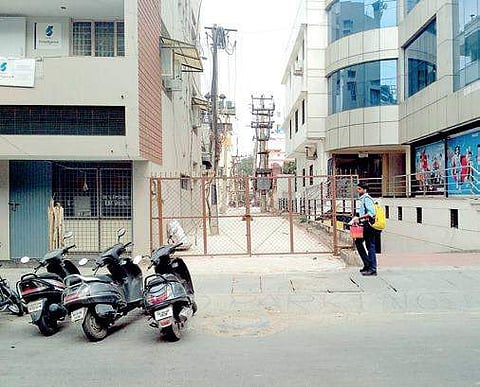

BENGALURU: For many residents living in the older parts of the city such as Malleswaram, Basavangudi and Jayanagar, there is little realisation about the existence of conservancy lanes. The lanes, which run parallel to main roads in these residential areas, though have a cynical history and are today in a state of neglect. A group of architects who have conducted a study on conservancy lanes, especially in Malleswaram, have highlighted how these spaces can be repurposed to provide the much needed open spaces for kids and elders. These lanes, they argue, can also be developed as dedicated bicycle lanes to connect different parts of the localities.
Most of the residents living or running businesses close to these lanes know little about their purpose (see box), commonly terming it as gullies. Zafar, who runs a shop in the conservancy lane parallel to Pattalamma Temple Road, doesn’t distinguish it from other streets. “Some lanes like this are barricaded in some parts. Mostly, people use them to park vehicles,” he said.When queried about the lanes running parallel to Vani Vilas Road, Srinivas J, a resident of Banashankari, said that some of them were barricaded by locals as people had started dumping waste on isolated stretches of such lanes. “This caused a lot of nuisance, especially for houses in the locality, due to which they started barricading,” he said.
Study done in Malleswaram
A study on conservancy lanes in Malleswaram was conducted by Firmterra, a group of architects, who found that these lanes, planned about a century ago, can be repurposed to provide some relief for children and senior citizens affected by a lack of open spaces.Speaking to Express, Suchitra Deep from Firmterra said the network of conservancy lanes in areas such as Malleswaram were in a poor state with shops in some corners of the street, parking and no lighting during the night. “While the lanes in most parts of Malleswaram are rarely used, the network of lanes was well used in commercial areas like East of Margosa Road,” she said.
With the growing number of vehicles posing a constant problem for pedestrians and cyclists, these lanes can be redesigned as ‘safe, quiet and virtually traffic-free passage’. “If benches and other people-friendly design elements can be added, conservancy lanes can be used more intensively as their width allow for other elements, such as street furniture or small landscaped play areas, to be added,” she said.
After having studied the conservancy lanes of Malleswaram, the organisation has plans to study other such lanes in the city to explore whether they can be developed based on local requirements, she added.
WHAT IS A CONSERVANCY LANE?
Conservancy lanes, which are generally found in the old, planned localities of Bengaluru, run parallel to main roads. They have a width of 8-10 feet and most of them have been concretised.
HISTORY OF THE LANES
Conservancy lanes are a remnant of a conservative casteist society when they were planned a century ago. Suchitra Deep from Firmterra said these lanes were historically used for manual scavenging. “Servants used to clear the night soil from privies of houses in the locality, by entering the house using conservancy lanes. “When the practice of manual scavenging was stopped, these were repurposed as shopping streets or as parking, or even as illegal storage spaces for small vendors,” she said.